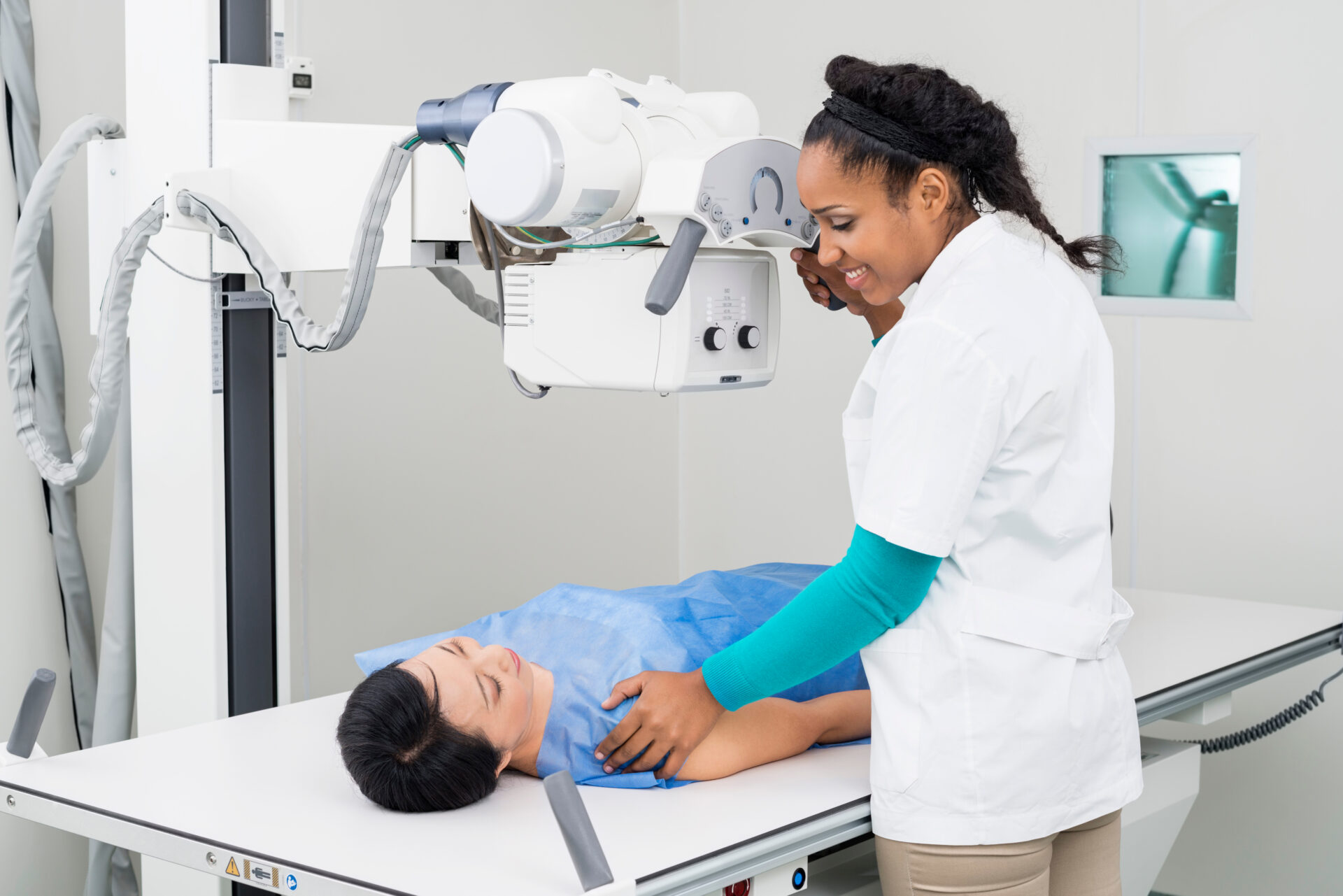DIAGNOSTIC TESTS
X-ray (Walk-in Service)
A quick, painless test that produces images of the structures inside your body.
X-rays are a common type of imaging scan used to view the body beyond the soft tissue. X-rays pass through your body, and they are absorbed in different amounts depending on the density of the material they pass through. Dense materials, such as bone and metal, appear white on X-rays. The air in your lungs appear black, and fat and muscle appear as shades of gray.
X-ray technology is used to examine many parts of the body, including:
Abdominal X-ray
- Digestive Tract Problems
- Swallowed Items – If your child has swallowed something like a key or a coin, an X-ray can show the location of that object.
Bone X-ray:
- Fractures and Infections – In most cases, fractures and infections in bones show up clearly on X-rays.
- Arthritis – X-rays of your joints can reveal signs of arthritis. X-rays taken over the years can help your doctor determine if your arthritis is worsening.
- Osteoporosis – Special types of X-ray tests can measure bone mineral density.
- Bone cancer – X-rays can reveal bone tumors.
- Head & Neck – Includes neck, skull, sinuses (not insured by OHIP), facial bones, nose, mandible, orbits, temporomandibular (TM) joints, and adenoids.
- Lower & Upper Extremities
- Spine & Pelvis
Chest X-ray:
- Lung Infections or Conditions – Evidence of pneumonia, tuberculosis or lung cancer can show up on chest X-rays.
- Enlarged Heart – This sign of heart failure shows up clearly on X-rays.
- Blocked Blood Vessels – Changes in blood flow to the lungs and heart can be seen on chest X-rays.
Immigration Chest X-ray (Not insured by OHIP):
An immigration medical examination, which includes a chest X-ray, is a mandatory requirement of Immigration, Refugees, and Citizenship Canada (IRCC). This chest X-ray is used to detect active tuberculosis for patients ages 11+ years prior to their arrival in Canada, to ensure they are treated and no longer infectious upon their arrival. These exams can only be requested by IRCC-approved doctors. Applicants must bring their immigration medical examination, unique medical identifier, or unique client identifier numbers with them to their walk-in X-ray exam.
BEFORE THE TEST
There is no physical preparation for an X-ray test. You should avoid wearing jewelry or clothing with metallic items on your test date. X-ray tests are provided on a walk-in basis, so therefore, you may have to wait for your turn.
Please inform the technologist if you are or think you may be pregnant. You should not have an x-ray during the last 2 weeks of their menstrual period.
DURING THE TEST
You may be required to remove your clothing and put on a paper gown.
During an X-ray, you will be asked to remain still while the process is being performed. The X-ray process is quick and usually lasts only a few seconds to a few minutes depending on the number of images required.
AFTER THE TEST
Once the test is completed, you are able to return to your normal activities. You may be asked to remain at the facility for additional x-rays while they are being developed. This is not a sign of abnormality, but only to ensure clarity of the images.
Source: Mayoclinic.org
Locations
- London Fanshawe
- London Southdale
- London Wharncliffe Imaging
- Milton Imaging
- Mississauga Imaging
- Newmarket Imaging
- North York
- Pickering
- Sarnia
- Sault Ste. Marie
- Scarborough
- Simcoe
- Sudbury Larch Imaging
- Sudbury Lasalle
- Sudbury Long Lake
- Thornhill
- Toronto Bay
- Toronto King
Google Reviews
Great place to get X-rays and ultrasounds done. Staff are courteous and friendly.
– FABIO S.

